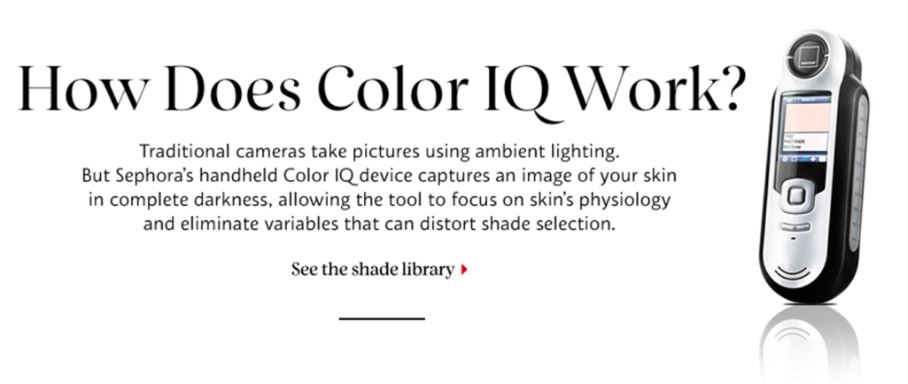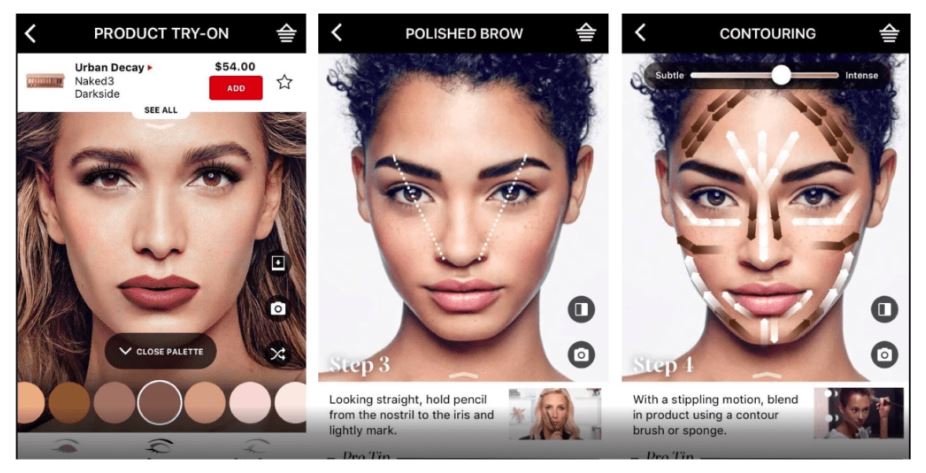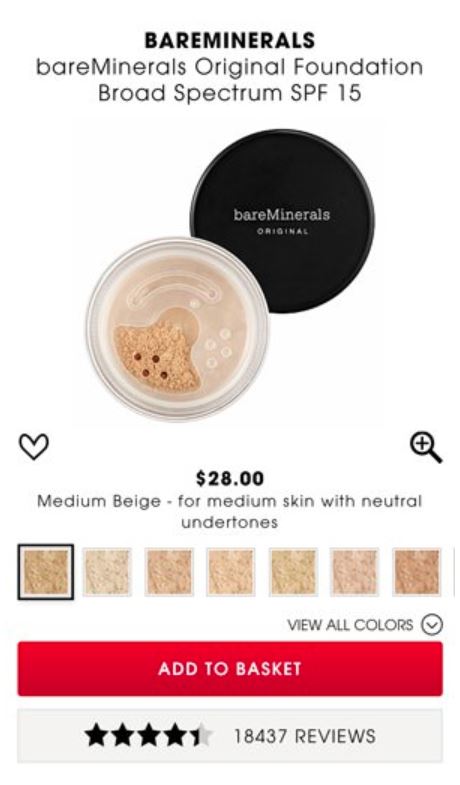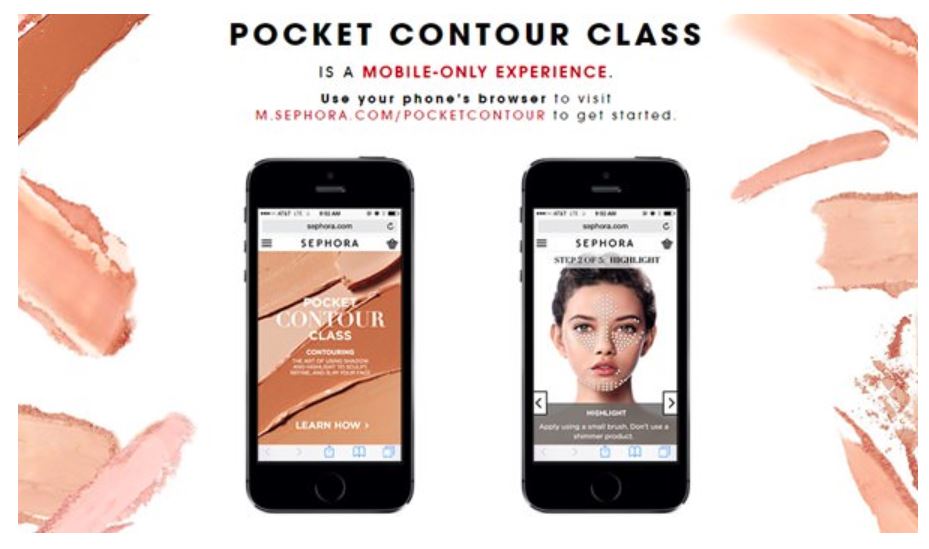Sephora: A Technology Foundation That’s More Than Skin Deep, and a Digital Success Story That’s More Than Meets the Eye

Sephora is leading the digital-first revolution in the beauty industry. Is digital a strong foundation, or will the company follow the rest of a retail industry and blush in the face of online pure-plays and Amazon?
Since the rise of the Internet, digital behemoths and upstart online pure-plays have been displacing their brick and mortar retail counterparts, disrupting business-as-usual throughout consumer sectors. Shifting with the tides and leveraging the digital revolution to augment an existing business is challenging. The skills required, talent needs, and organizational inertia pose ongoing challenges to retail executives, and few are navigating this transition as successfully as a winner of the digital revolution: Sephora.
Founded in 1970, Sephora preceded the existence of almost all of the technology that the company leverages for success today. In fact, in the beauty industry, it’s almost counter-intuitive that digital can play such a significant role in the customer experience. How can a cosmetics retailer – a company that primarily deals in physical goods which individuals want to touch and feel, demo, and view in front of a mirror – leverage digital to better serve customers? This is what makes Sephora’s digital transformation so impressive. Not only have they successfully integrated digital into their company DNA, they have become a digital-first player in an otherwise brick-and-mortar industry worth $56 billion in the US alone – leveraging multiple nascent technologies to advance the business across several fronts.
Augmented Reality and Artificial Intelligence
One of the more unique applications of technology in the Sephora platform is with augmented reality and artificial intelligence. Sephora has successfully shattered the barrier between the physical and the digital worlds with the integration of Modiface into their offering – a facial analysis and visualization technology firm that has been a Sephora partner for nearly a decade. Through this partnership, Modiface enables augmented reality “digital try-ons” of Sephora’s products so that shoppers can experience beauty products without having to physically go to a store. In combination with Sephora’s Visual Artist product, customers can upload photos of themselves and discover compatible products that work with their unique skin tones and desired look. Since launch, this feature has seen 8.5 million visits with over 200 million shades tried across 20,000 SKUs ranging from lipsticks to eye shadows and blushes.
At the same time, Sephora leverages artificial intelligence to provide product recommendations to members using its visualization capabilities. Sephora’s proprietary Color iQ technology can scan a customer’s skin to assign unique Color iQ numbers which correspond to various cosmetics that meet the individual’s needs and offer personalized, relevant recommendations. While these functions are impressive, innovation never rests, and Sephora has not grown complacent. Since launch in 2016, Sephora’s AI and AR platforms have added new features in 4-month sprints to continue advancing the company’s offerings, helping the company stay ahead of the competition.
Mobile, Data, Content Development, and Customer Engagement
Bringing the shopping experience into the digital age also requires an omnichannel approach, linking the physical stores to the vast expanses of information users are accustomed to leveraging in online channels. Through the Sephora app, customers can scan products to access online reviews and product ratings. This matches the service that an in-store associate may otherwise provide, while clearly displaying prices, available SKUs, and online ordering if not available in-store. Furthermore, customers can find products in-store with in-app directions.
With this mobile engagement and through its multiple digital initiatives, Sephora also collects troves of useful shopper data which it harnesses to continue enhancing the customer journey. Through observation of trends and shopping habits, Sephora is able to tailor marketing content, better segment its audiences, and personalize advertisements to individuals. Leveraging services such as Google Analytics 360 Suite, Sephora matches customers across channels and tracks the drivers of sales.
Further enhancing the value of Sephora’s digital strategy is its member engagement through the company’s online content. Observing that some customers were not aware of the best uses for their beauty products and failing to engage outside of physical stores, Sephora generated its own online content and developed the Sephora Pocket Contour Class to offer tutorials, videos, and explanations of how to apply and use products most effectively via easy-to-understand and highly accessible video tutorials. Through this mobile experience, users engage with Sephora even when not shopping and develop an affinity for the brand. From 2016 to 2017, the content library grew from 250 videos to over 600 videos. This engagement works in conjunction with Beauty TIP (teach, inspire, play) workshops which bring customers together for group beauty courses and bolster brand engagement.
Organizational Alignment
Winning in retail with digital strategies is not just a matter of introducing plug-and-play technologies. In order to succeed with the digital transition, Sephora leadership brought in-store and digital functions into one division to coordinate everything from customer service to sales metrics and shopper experience. Aligning organizational goals in this way has led to holistic enhancements that transcend digital vs brick-and-mortar strategies, but instead prioritize an elevated omnichannel experience. For example, by cross-channel tracking, Sephora concluded that online advertising had boosted total sales much more than digital-only sales might indicate. With a 3.9x higher return on ad spend and a 3x increase in conversion rates from digital ads in the brick-and-mortar channel, Sephora found that it could continue investing in digital ads even when the online sales did not necessarily justify the expense on their own.
Sephora also launched its own Innovation Lab in 2015 to democratize the digital transition, bringing together executives from the marketing, product development, and technology divisions to launch new offerings and technologies for omnichannel shopping with Sephora. In combination with Sephora’s Think Tank and Idea Central, Sephora leverages digital communication to source ideas from employees and enable them to pitch ideas to management, ensuring innovations bubble to the top, employees are engaged and invested in the digital transition, and customers win with a superior shopping experience.
Conclusion and Looking Ahead
Together, these strategic choices and a digital-first strategy have propelled Sephora through the technological revolution in retail (maintaining high single-digit to low double-digit growth) and helped the company stay relevant as online giants like Amazon move in. Competitors such as Ulta Beauty continue to converge with Sephora’s bold digital strategy as the luxury retailer extends its reach to scale and include more customers through its digital offerings. Through continuous innovation in these initiatives, Sephora has enhanced its brand image and relevance, expanded its appeal to younger customer segments, and integrated with department stores to further differentiate and win with the company’s omnichannel experience. Powered by technology, the sky is the limit, and digital-first Sephora is more than meets the eye…
References:
https://etailwest.wbresearch.com/how-sephora-integrates-retail-online-marketing
https://www.cbinsights.com/research/report/sephora-teardown/#section2
https://digiday.com/marketing/sephora-merged-digital-physical-retail-teams-one-department/










Do you think Sephora’s strategy is to use these tools to push more customers online / onto mobile, or to pull more customers into stores?
I think it’s actually not an either-or … I think Sephora is simply trying to create a more sticky brand and a more loyal customer base that shops either online or offline. These digital innovations seem to be meeting consumer demands and create a great example of a brick-and-mortar company that stay’s relevant in a digital age.
Very well written blog! I wonder what the implications on CRM be now that Sephora is omnichannel. How are they tracing the behavior of customers who are interacting with Sephora at multiple touchpoints (offline and online). If a customer added a product on their wishlist and then visited the store, will the employee at the cash register remind the customer of these products? I guess the next step would be to maximize value of being omnichannel as opposed to cannibalizing its sales.
Very interesting! One question I am thinking is that how should Sephora balance its online sale and offline sale. Another thing is that when I use the app, I feel it is not real enough. I am not sure whether it is easy to improve the technology to make it feel more real. There are something similar, an online trial for clothes app in China, which was failed due to the fitting image is not real enough.
What I’m seeing is the digitization of what were brick-and-mortar fundamentals. Love the application of AR and AI – the technology has effectively disrupted the in-store consultant. Investments in UX/UI are the equivalent of great displays. Services like recommendations and how-to classes not only work because Sephora is an established beauty authority, but it also continues to reinforce the brand strength (virtuous cycle). This is what will keep their products from being commodified and effectively safeguard them versus Amazon.
Fascinated by this blog post. I didn’t know that Sephora was pioneering the change in landscape of the cosmetics industry. Going forward, Sephora should focus on how to keep itself ahead of the curve as most of the differentiating factors (e.g., AI technologies, data etc.) are replicable by big players.